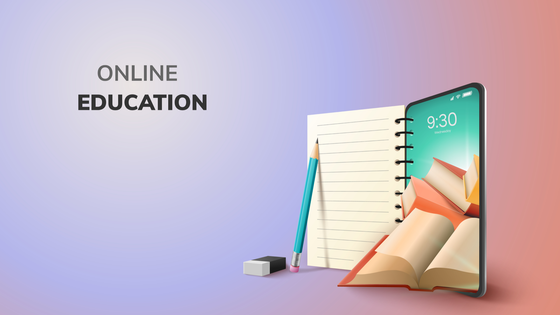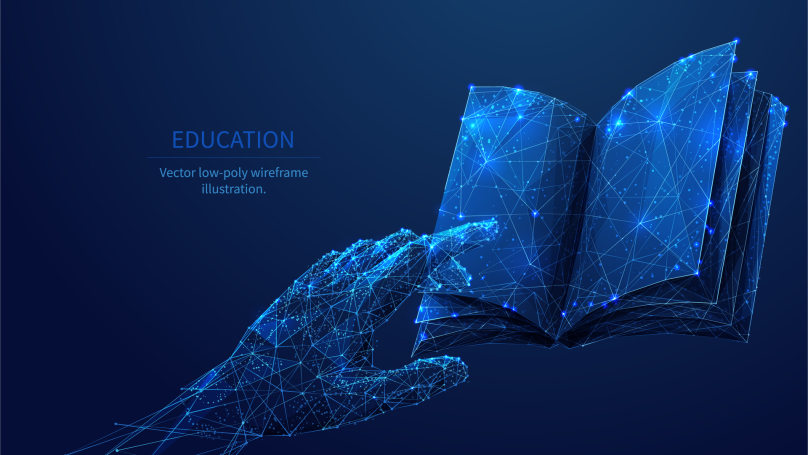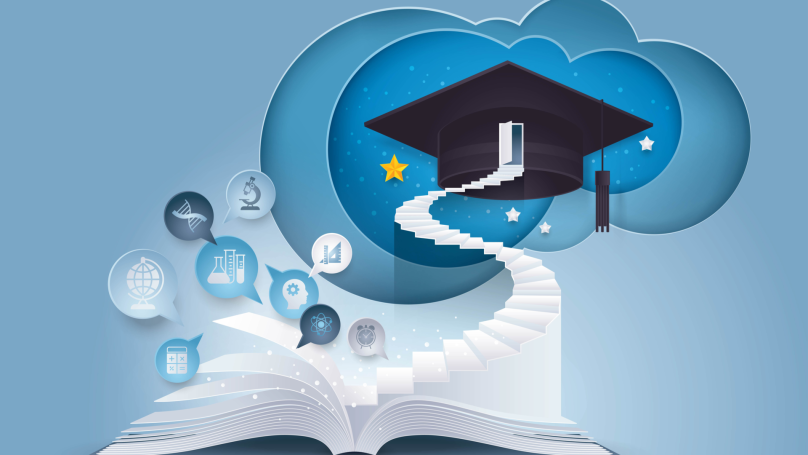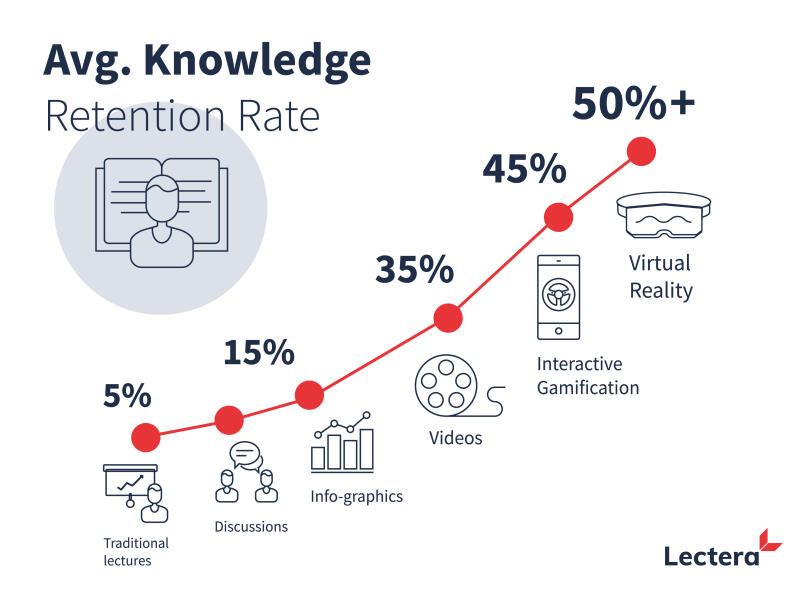Modern teaching methods that will change education in 2021
Education today looks quite different from our traditional understanding. Today high technologies largely determine both what and how we learn. In future, their influence on education will only increase.

All universities need to introduce technical innovations; otherwise the education they offer will no longer meet the challenges of the times and the needs of students. To prevent this from happening, it is necessary to develop digital education and integrate it with traditional education. A lot of attention is being paid to this all over the world: it is estimated that spending on digitalization of education by 2025 will amount to at least $ 350 billion. This figure will only grow as we go along. Let's talk in more detail about the most modern teaching tools today.
-
Video tutorial

More than 2.3 billion people are already using YouTube videos to get education. In many situations, watching videos is even more convenient than reading. In addition, this form of learning often helps to understand, absorb and remember the material better. Now you can access the Internet from various gadgets, for example, from smartphones and even TVs. This makes it even more comfortable to learn through video, and correspondingly, this method of learning is gaining popularity.
Interesting and interactive training videos are likely to be in demand in higher education as well. After all, it is very convenient to both students and the teachers: it is only necessary to shoot a video once, and any number of people can watch it for unlimited number of times. In addition, video tutoring also solves a logistics problem for students, for example, it is no longer necessary to travel to another city to listen to a lecture. In this case, the university can shoot a series of lectures for non-resident students and organize online consultations with teachers.
Instructional videos are best shot in formats that have already proven their worth. These include:
- Thematic videos.
- Technological videos with illustrative material (pictures and screenshots).
- Direct shooting of the lesson.
Creating and publishing these videos is getting more and more economical, and inexpensive software for editing them is becoming available. There are also free editing tools, such as loom.com.
It is also profitable for universities to shoot video: creating a video is very cheap, and video tutorials help to reduce transport costs and improve the quality of education. Students can watch the videos repeatedly, revisit the lecture if in doubt, which means they can absorb and gain far more from the material. You can watch the video from different gadgets, so students can study at any time in a convenient place for them. This is how the modern educational environment is formed, so universities should definitely encourage both students who use videos to study, and so also the teachers who shoot them.
-
Gamification of learning

Gamification is the use of game mechanics to build educational processes that foster student engagement, loyalty and competition. The gamification method can include the use of points, leader ratings, direct contests, stickers or badges. The method can also incorporate substantial material or non-material incentives (prizes), for example, for good academic performance.
Games in any form increase student motivation. And motivation is the key to success in learning. Albert Einstein himself believed that games are the most evolved and productive form of research. In his opinion, the game study provides an opportunity to dive deeper into the topic and gain practical experience. On top of that, gamification is aimed at group learning rather than individual learning, which also promotes team building and helps develop students' communication skills. This approach can significantly increase the speed and quality of assimilation of new knowledge, as well as retain the attention of students for a long time. For this reason, gamification is so popular not only in elementary school, but also in higher education.
-
Podcasting

Teaching podcasts are one of the most popular tools in modern education today. Many online platforms and even giants like Apple and Google create their own podcasts. Despite their overwhelming popularity, most podcasts are now available for free.
Just like videos, podcasts allow the student to learn when and where they want. Unlike regular lectures, you can listen to podcasts even without interrupting routine tasks, for example, during cleaning or on the way to university, instead of listening to music. Students can listen to recorded audio lectures from their own instructors to better understand a complex topic, or go over the material once more before an exam.
Most importantly, universities can use the podcast not only for educational purposes, but also to develop their image and brand. Thus, many educational institutions are launching their podcast channels in order to attract more applicants to their educational programs by reaching out to a wider audience.
-
Online assessments

There cannot be 2 opinions about the fact that grading system is very important for universities. Without their knowledge being assessed, students will not be able to track their progress, and too, universities themselves will not be able to ensure that their education is at the proper level. Nowadays, grades are most often assessed, and written down with a pen and paper. Automation can significantly simplify this process. We are talking about are online exams, which is another example of modern teaching method.
They make it possible to simplify not only the assessment process, but also the very procedure for testing knowledge. Online exams can include both written tests, as well oral testing of theoretical knowledge (for example, on a webcam). With the help of artificial intelligence, the computer can process and analyze them, comparing them with the embedded model template of responses. This makes digitized grades and scores for online exams much easier to process. AI enables holistic analysis of student performance. As a result, teachers will be able to pay attention to topics that are difficult for students to absorb, and spend more time on them to improve students' performance.
In order to ensure the safety and reliability of online exam results, modern data protection technologies such as blockchain or remote proctoring can be used. So, with the help of proctoring, you can take photos and videos of students who are taking an exam remotely, in order to verify their identity. Also, the use of such technologies allows you to reduce cheating during exams to a minimum.
Lectera’s Online Courses by topic
-
Self education

In 2020, the demand for online courses has increased, because their indisputable advantage is the ability to study material on your own at an optimal and adjustable pace, with comfort for each individual student. While previously such self-directed learning used to be controversial due to the difficulty of grading it, now this problem is easily solved with the help of online exam and automated assessment tools.
Already, many universities offer students to enroll in online courses. Even some programs and certificates are available only to those who study online. Most likely, in near future, universities will spend more and more funds on development of online education: this will require building a whole new infrastructure that will form the basis of a new modern educational environment.
-
Augmented reality (VR)

Virtual Reality (VR) is becoming an increasingly effective teaching tool. This technology allows you to create a virtual copy of the object, as if it were in the same room with the student. For example, VR headsets can model a 3D image of a skeleton for medical students or an airplane model for future aviation engineers. This makes it much easier to study the structure of many things and their features.
The use of augmented reality technologies is becoming more and more accessible. At the same time, their use is very exciting for students, which means it increases the effectiveness of learning. This is what makes the use of VR technologies so beneficial for universities and the modern education system in general. The development and emergence of new teaching tools in 3D is only a matter of time.
-
Chatbots

Over the past year, using chatbots has become much easier. Many online stores have started to use them in their work, but chatbots will also be useful for universities.
First of all, chat bots can be used to answer applicants' questions, for example, about the criteria for admission to a university, the procedure for obtaining a scholarship, paperwork or payment methods etc. Such chatbots will significantly save employees' time, and also expense for the university. Their development will cost universities much less than hiring specialists to answer and consult applicants by phone or e-mail.
In addition, educational libraries supported by chatbots are already being created already today. These chatbots help students find and extract information from hundreds of different sources which have been digitized into one resource. Chatbots can also being used in online education: they can play the role of a mentor and guide during an educational course. So, if a student still has questions about the topic of the lesson, he can ask the bot to provide additional information or answer certain questions. This will reduce the burden on teachers and speed up the learning process, because chatbots, unlike live teachers, are available round the clock and do not need rest.

This graph clearly demonstrates how the use of modern teaching tools makes it easier for students to understand and retain information. Such efficiency of these tools is explained by the fact that most of them rely on the visualization of knowledge. And, as they say, "a picture is worth a 1000 words." In order not to lose their students, educational institutions must introduce modern teaching methods into their work today. It is especially important to provide students with the same benefits that online platforms can provide: make learning flexible and mobile, and also personalize it and make corrections on the fly.
Share this with your friends via:
Latest News

A significant stage in the development of the alternative education system has begun in West Northamptonshire in the UK: the County Council is actively calling on parents, guardians, and trustees to participate in shaping the future of this key area.

Outwoods Primary School in Atherstone, Warwickshire, having experienced deep sadness after the loss of their famous cat, Silla, has found solace in a new pet – a Maine Coon named Aloysius O’Hara.

In modern universities, artificial intelligence, and in particular ChatGPT, is rapidly transforming from a controversial tool into a full-fledged student assistant.

An innovative educational project is gaining momentum in UK primary schools, aiming to change attitudes towards video games.

The Massachusetts Institute of Technology (MIT) presents MIT Learn – a revolutionary online platform that opens a “new front door” to access university knowledge and resources.












 How the Christmas Tree Became the Symbol of the New Year: From Pagan Groves to Sparkling Ornaments
How the Christmas Tree Became the Symbol of the New Year: From Pagan Groves to Sparkling Ornaments
 How to Keep New Year’s Resolutions: A Detailed Guide to Real Change
How to Keep New Year’s Resolutions: A Detailed Guide to Real Change
 6 Life Areas You Have Almost Certainly Never Paid Attention To
6 Life Areas You Have Almost Certainly Never Paid Attention To
 Test. What Winter Dessert Are You?
Test. What Winter Dessert Are You?
 Test: What Kind of Ancient Goddess Are You?
Test: What Kind of Ancient Goddess Are You?
 Test: Which Great Woman Would Invite You for Tea?
Test: Which Great Woman Would Invite You for Tea?
